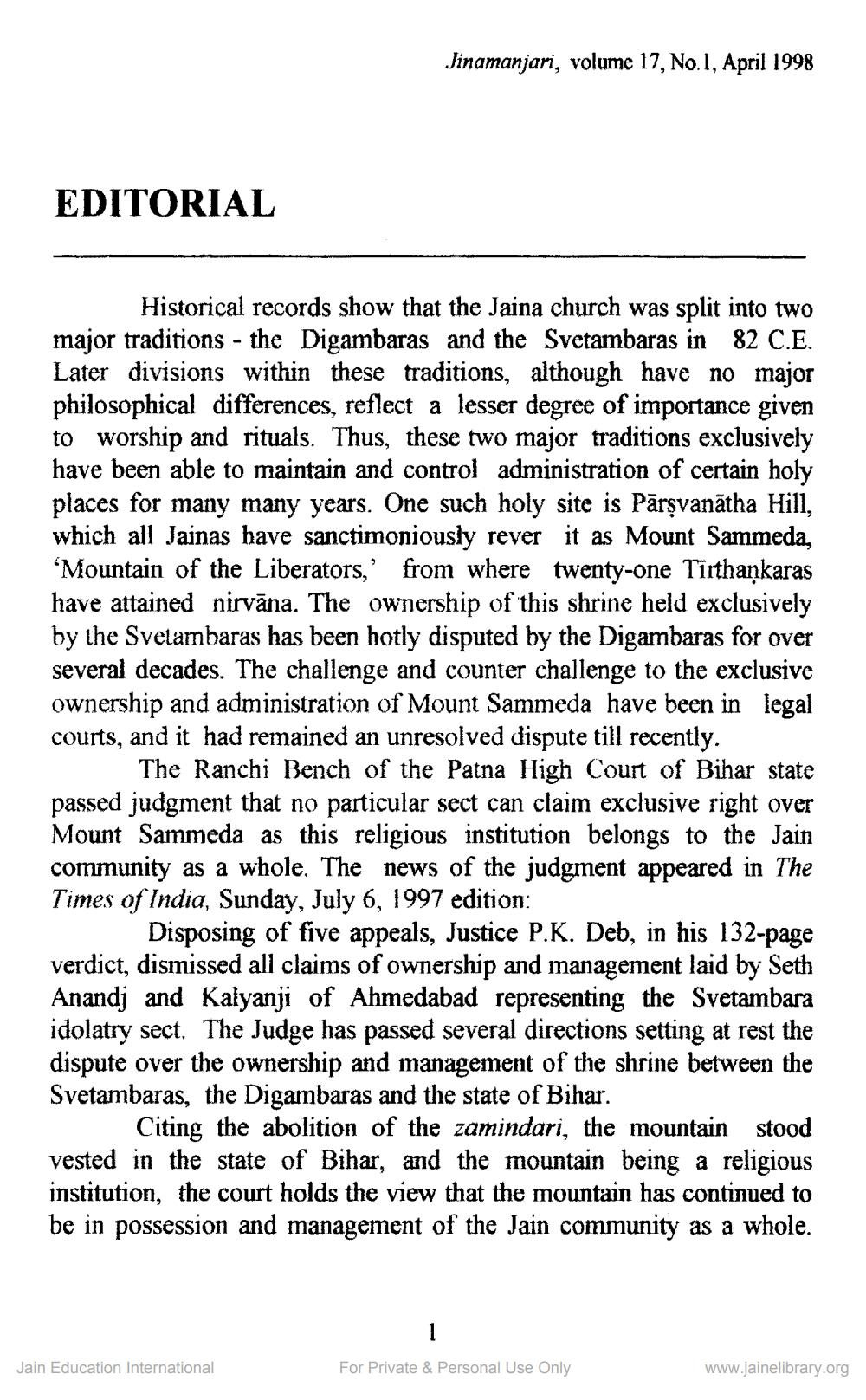________________
Jinamanjari, volume 17, No. 1, April 1998
EDITORIAL
Historical records show that the Jaina church was split into two major traditions - the Digambaras and the Svetambaras in 82 C.E. Later divisions within these traditions, although have no major philosophical differences, reflect a lesser degree of importance given to worship and rituals. Thus, these two major traditions exclusively have been able to maintain and control administration of certain holy places for many many years. One such holy site is Pārsvanātha Hill, which all Jainas have sanctimoniously rever it as Mount Sammeda, ‘Mountain of the Liberators,' from where twenty-one Tīrthankaras have attained nirvāna. The ownership of this shrine held exclusively by the Svetambaras has been hotly disputed by the Digambaras for over several decades. The challenge and counter challenge to the exclusive ownership and administration of Mount Sammeda have been in legal courts, and it had remained an unresolved dispute till recently.
The Ranchi Bench of the Patna High Court of Bihar state passed judgment that no particular sect can claim exclusive right over Mount Sammeda as this religious institution belongs to the Jain community as a whole. The news of the judgment appeared in The Times of India, Sunday, July 6, 1997 edition:
Disposing of five appeals, Justice P.K. Deb, in his 132-page verdict, dismissed all claims of ownership and management laid by Seth Anandj and Kalyanji of Ahmedabad representing the Svetambara idolatry sect. The Judge has passed several directions setting at rest the dispute over the ownership and management of the shrine between the Svetambaras, the Digambaras and the state of Bihar.
Citing the abolition of the zamindari, the mountain stood vested in the state of Bihar, and the mountain being a religious institution, the court holds the view that the mountain has continued to be in possession and management of the Jain community as a whole.
Jain Education International
For Private & Personal Use Only
www.jainelibrary.org




